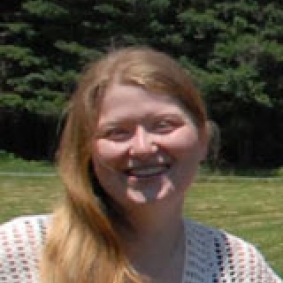Eight students will be presenting the summer work at the Ocean Sciences Meeting in March 2022!
Heather Goldsborough, University of Maryland Eastern Shore
Class Year:
2016Mentor:
Judy O'Neil, Ph.D.Project Title:
Nitrogen Fixation among Aquatic Grasses of the Chesapeake Bay: a Comparison
Abstract:
To increase knowledge of the dynamic interactions between nitrogen fixing bacteria, submerged aquatic vegetation, marsh grass, and the surrounding environment of the Chesapeake Bay, samples of water, vegetation, and sediment were collected for analysis from eight diverse sites which varied in salinity, physical and chemical water quality and plant species. Nitrogen fixation rates were determined by performance of acetylene reduction assays using gas chromatography with a flame ionization detector and normalized to dry weight. A comparison of sample sites and microenvironments in relation to nitrogen fixation rates showed that nitrogen fixation was highest in the root zone and virtually absent from the water column during sampling dates. Anaerobic conditions increased N2 fixation rates in benthic samples. Positive correlations to fixation rates compared to sediment organic content and water column ammonia levels were also found. A persistent bloom of filamentous Lyngbya wollei dominated area N2 fixation rates in the Susquehanna Flats Vallisneria bed, causing trends divergent from other sites. Despite concerns of possible vegetation shading from floating Lyngbya mats and fixation driven eutrophication, the bed was dense and healthy with blades longer than those at any other site and encouragingly low nutrient concentrations. Overall, results point to relatively healthy ecosystems where nitrogen fixing bacteria exist in symbiosis with local vegetation.



